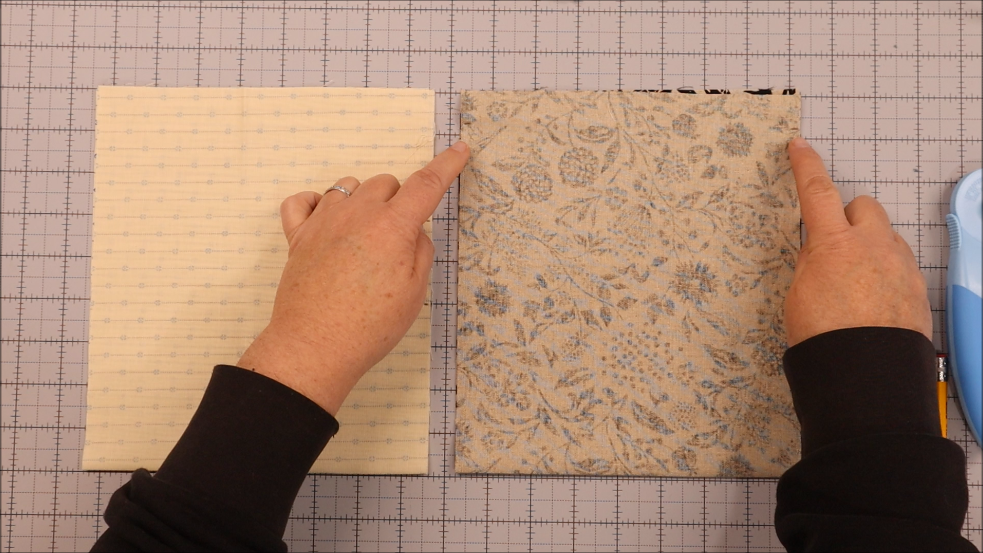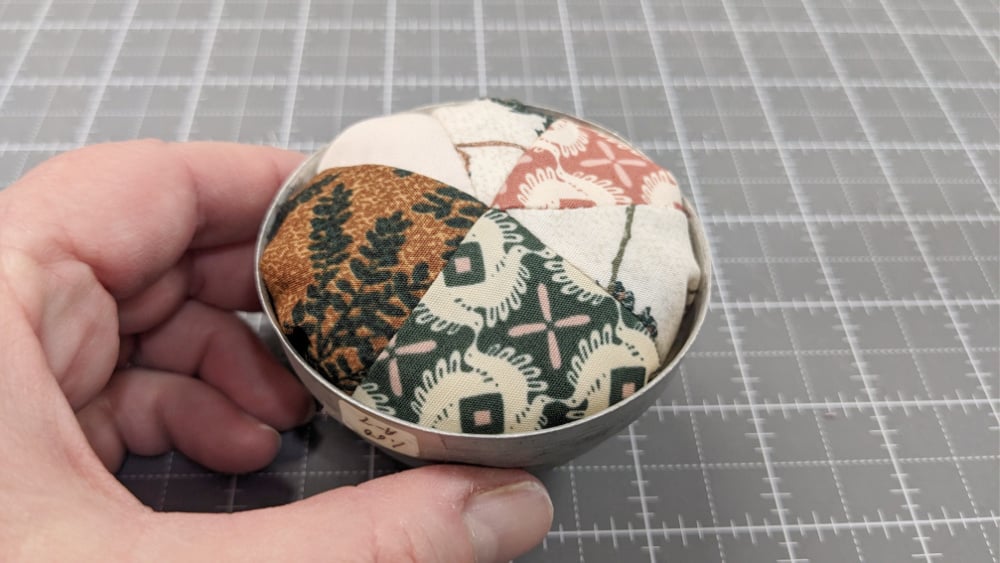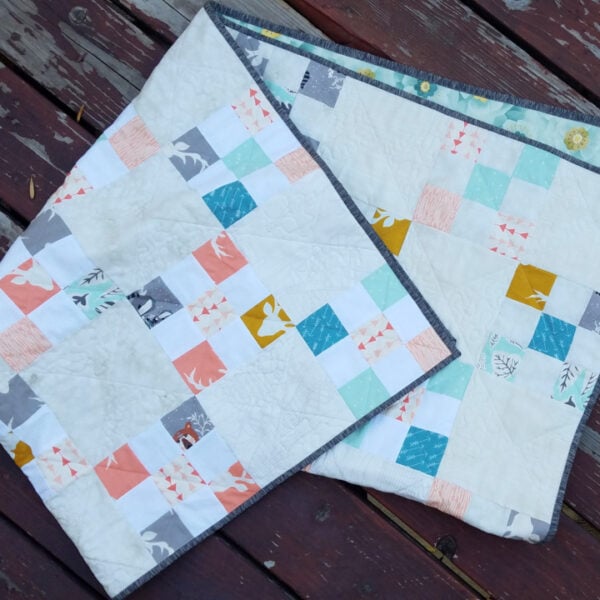Learn how to make a draw string bag that can hold your sewing machine pedal – perfect for your travel sewing machine.
Are you finding yourself tangled with cords when you take your sewing machine on a retreat or sew day with friends? The sewing machine pedal bag pattern helps you keep those cords together along with your machine pedal.
All in one place and it should be able to tuck under the arm of your sewing machine when it is sitting in your machine travel bag.
You’ll find it handy and really quite helpful when you are packing your sewing machine around. No more random cords hanging out in the bag and getting in the way when you are trying to set up your sewing spot.

Why do I need to put my sewing machine foot in a bag?
To keep your sanity and remove the frustration when you are packing your machine to new places. The pedal bag allows you to tuck your cord for the machine and the whole pedal along with it’s cord. No more random messy cords in the bag and jumping out when you are unloading your machine.
Your cords can get stuck under the needle or presser foot (I make sure both of these are in the down position when transporting my machine). They can also twist around other things in the bag like scissors and rotary cutters as well as your thread holder.
Keeping things in one bag – with a ribbon closure definitely helps with keeping your stuff organized.
Want the ad free pdf file?! Scroll to the bottom of the post for more details!
What size of bag do I need to make?
This really depends. I have found that my foot fit into another bag (I tested a few out) that was 8″ wide. But it needed more space along the top for the closure.
You can try a few bags before cutting your fabric to make sure that you have the right size for your machine pedal.

Choosing the Right Fabric
I didn’t want a too floppy bag, so I used a heavier weight fabric for the outside of the bag. There is no batting in between the two pieces of fabric. The decorator type fabric was stiff enough to hold it’s shape and the items that you are placing inside, I didn’t need any additional batting.
For the lining, I chose regular quilting fabric. I chose to use a light fabric so I could see everything inside. I have a hard time seeing things in bags when it’s dark fabric. So, I used a light fabric. I am aware that it may look dirtier after a bit of use because the machine pedal does go on the ground, but I’m ok with that.
You can use your scraps, fat quarters or anything from your stash that you like.
Materials Needed:

1- 8″ x 18″ outside fabric (I chose to use a heavier, decorator type of fabric)
1- 8″ x 18″ lining fabric (I chose regular quilting cotton)
2- 3/4″ x 24″ ribbon, cord, or selvage (this is what I used)
Sewing Machine Pedal Bag Pattern
Marking Your Fabric
1- Lay the fabric on the table and fold in half so you end up with a piece 8″ x 9″ > Right Sides Facing
2- Press the bottom fold to make a crease
3- Do this for both the lining and outside fabric


4- With a ruler and pencil, mark on the wrong side of the lining a 2″ space on one side of the bag. This space should be in the middle of the side. Doesn’t need to be perfectly placed. This is where you are going to turn the bags right sides out – you are not going to sew in this 2″ space.


5- With a ruler and pencil, mark on the wrong side of the outside 3/4″ from the top edge (this top edge has the raw edge, NOT the folded edge).

6- With a ruler and pencil, mark again from the previous mark on the outside – 3/4″ from the mark. This space in between these two marks is where the ribbon casing will be. You are not going to sew in this area.
Sewing Your Bag

1- Sew BOTH sides of the lining, skipping the 2″ area from step 4 above.

2- Sew BOTH sides of the outside fabric, skipping the marked area on BOTH sides

– Using a wood presser or roller, open the side seams of the outside fabric and press. This is the openings for the casing you want this to look nice!


3- Turn the outside fabric out, place your hand inside and stuff this INSIDE the lining. (Keep the lining with wrong sides out)

4- Line up the side seams of the lining and outside fabric, pin to secure at each seam

5- Sew along the top edge, all the way around

6- Open the 2″ area and push the fabric through, turning the bag right sides out. Don’t forget – sew the opening for turning closed


7- Push the top seam so it lays flat and nicely, press
Sewing the Ribbon Casing

1- Sew along the top edge of the bag 1/8″ to make it a nice, finished edge
2- Sew 1/4″ from the top edge all the way around the bag. This is the top seam of the casing
3- Sew 1 1/4″ from the top edge all the way around the bag (check that this seam is below the openings before sewing)
Thread the Ribbon in the Casing

1- Fold one end of the ribbon and pin with a safety pin

2- Feed the ribbon in on side, go around the WHOLE BAG and come back out the SAME hole that you entered in

3- Pull the ribbon so the ends line up and tie in a knot
4- Feed the second ribbon on the opposite side, go around the WHOLE BAG and come back out the SAME hole that you entered in

5- Pull the ribbon so the ends line up and tie in a knot
Use the Pedal Bag
Your bag is now finished and you can stuff your cords and the sewing machine foot inside!


Sewing Machine Pedal Bag Video

Get the ad-free PDF
Click the button below and download the Printable Tutorial.

More Sewing Machine Resources
- Cleaning PlexiGlass
- Sewing Machine LED light
- How to store your sewing machine feet
- 20+ Sewing machine cover tutorials
- 10 Minute sewing machine cover tutorial
- Machine cleaning printable
More Bag Tutorials

Quilt as you go – clutch bag. This is a great kit from June Tailor.

Make a lunch bag – it’s simple to sew and really quick… perfect for any school day.

Project Bag – this is another style and is a little sturdier than this tutorial.
Becky Jorgensen is the creative quilter behind Patchwork Posse, the Patchwork Planner and her online quilt group Patchworkers Plus. You can find her patterns in books, magazines, and her quilt membership. Gather your quilting supplies, organize your sewing space, explore the process of disappearing quilt blocks, or finish a free quilt pattern. I'll help you use what you have, finish what you start and make your quilting journey fun!
Follow me here: Facebook, Pinterest, YouTube






